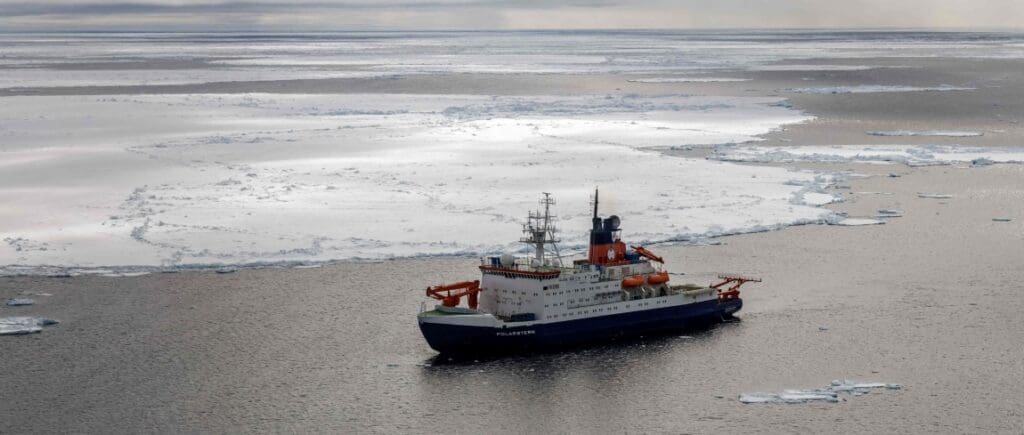Bolstering community resilience through health-focused climate change adaptation: moving from talk to action in Western Canadian communities
The impacts of climate change have been recognized as a global health emergency. Worsening climate stressors are resulting in injury, illness and death. As this threat to health grows, so does the need to adapt. Climate change adaptation has been noted to reduce the risk of disease transmission, chronic illness exacerbation, physical trauma, and the mental health impacts associated with climate change.
Cities across Western Canada have initiated the process of implementing health-focused climate change adaptation; however, progress has been slow, leaving communities vulnerable to health threats. Exploring five case study communities in Western Canada, this research sheds light on factors that enable and constrain progress on health-focused climate change adaptation.
Rose, D., & Birchall, S. J. ‘Bolstering community resilience through health-focused climate change adaptation: moving from talk to action in Western Canadian communities’, Climate Policy 1–17 (2024). DOI: 10.1080/14693062.2024.2395920
Unveiling local climate action: a case study of mitigation efforts in Gauteng’s West Rand District Municipality, South Africa
Effective national climate action hinges on robust local implementation. Fossil fuel-intensive and extractive activities are often based in peri-urban municipalities, but local climate change governance in such areas receives little attention. This study addresses this gap by examining climate change mitigation efforts in Gauteng’s West Rand District Municipality (WRDM) in South Africa.
The transparency, coherence and implementability of local climate mitigation governance are assessed by analysing available greenhouse gas emissions (GHG) data, policy and regulatory documents from all governance levels, and interviews with government officials. Severe limitations were encountered in accessing local GHG emissions data, little current data was publically available.
Rasebechele, P., Langerman, K., & Kelso, C. ‘Unveiling local climate action: a case study of mitigation efforts in Gauteng’s West Rand District Municipality, South Africa’, Climate Policy 1–18 (2024). DOI: 10.1080/14693062.2024.2401851
Mainstreaming decarbonization through local climate budgets in Norwegian municipalities
Climate budgets are increasingly being used in local climate governance, but it is not clear whether they have the potential to drive systemic change toward decarbonization. This study uses a political dynamics of decarbonization framework to assess the transformative potential of municipal climate budgets to catalyze changes across cultural, economic, political, and technological systems to overcome carbon lock-in.
Document analysis and interviews with climate budget experts from Oslo, Fredrikstad, Hamar, Bergen, Arendal, Bærum, Asker and the county of Agder in Norway were employed in this study to identify and discuss transformative conditions for decarbonization. Climate budgets are used to integrate climate change mitigation as a core element of municipal governance. This approach aims to integrate climate change mitigation into existing decision-making mechanisms and expand the mandates of municipal departments and agencies in executing and overseeing climate actions.
Baggio, G., & Tozer, L. ‘Mainstreaming decarbonization through local climate budgets in Norwegian municipalities’, Climate Policy 1–15 (2024). DOI: 10.1080/14693062.2024.2403563
Mapping forest-based natural climate solutions
Natural climate solutions are critical actions of ecosystem stewardship to mitigate climate change. However, prioritizing locations and possible actions is challenging. We demonstrate a generalizable approach for identifying potential opportunities for natural climate solutions by creating a spatial hierarchy of land management restrictions.
Global forest carbon stocks and flux models were then used to explore forest-based natural climate solutions in the high-carbon density coastal temperate rainforests of western North America. Our results show 13 million hectares are available for action, an area that holds 4,900 ± 640 megatonnes of carbon dioxide equivalent and represents 45% of regional and 0.5% of global aboveground forest carbon stocks.
Shanley, C.S., Graves, R.A., Drever, C.R. et al. ‘Mapping forest-based natural climate solutions’, Communications Earth & Environment 5, 502 (2024). DOI: 10.1038/s43247-024-01678-z
Carbon pricing acceptance – the role of revenue recycling among households and companies in Norway
Effective carbon taxation is essential for achieving the green transition. However, there is typically stiff opposition to carbon taxation due to adverse equity and other impacts. Hence, it is essential to get a better understanding of which factors, including the use of tax revenue, can increase acceptability. To date, stated preference methods, rarely used to analyse this issue, have focused only on households.
We conduct two national choice experiment surveys of Norwegian households and companies. The experiments include carbon taxes on transport fuel and associated emission reductions and different revenue recycling options as attributes. We find that both groups are more accepting of higher tax levels if the revenues finance climate change mitigation efforts.
Dugstad, A., Grimsrud, K. M., & Lindhjem, H. ‘Carbon pricing acceptance – the role of revenue recycling among households and companies in Norway’, Climate Policy 1–16 (2024). DOI: 10.1080/14693062.2024.2401853
The ocean carbon sink enhances countries’ inclusive wealth and reduces the cost of national climate policies
Improving our understanding of future ocean carbon uptake requires a nuanced understanding of the value of the annual ocean sink. Here, we combine an abatement cost-based approach and a climate damage-based approach to assess the value of the annual ocean sink.
The former shows that the aggregate cost of national climate policies could increase by up to USD 80 billion if the ocean carbon sink weakens by 10 percent. As a complementary perspective, the damage-based approach shows that the annual ocean carbon sink contributes between USD 300 billion and USD 2,332 billion to countries’ inclusive wealth.
Rickels, W., Meier, F., Peterson, S. et al. ‘The ocean carbon sink enhances countries’ inclusive wealth and reduces the cost of national climate policies’, Communications Earth & Environment 5, 513 (2024). DOI: 10.1038/s43247-024-01674-3
Carbon farming diffusion in Australia
Carbon farming is a set of land management practices that abate carbon emissions through carbon sequestration and emissions avoidance. The Australian Carbon Credit Unit scheme enables landholders to receive carbon credits for implementing carbon farming projects that use approved methods to reduce emissions relative to baseline practice.
The most widely adopted methodology under this scheme is human induced regeneration, whereby a landholder implements land management changes to enable a forest to regrow. Here, we model the spatial diffusion of human induced regeneration projects in Australia between 2014 and 2022 using spatiotemporal data on project registrations and spatial data on the methodology’s economic feasibility.
David Evans, Bernardo Cantone, Cara Stitzlein, Andrew Reeson, ‘Carbon farming diffusion in Australia’, Global Environmental Change 89 (2024). DOI: 10.1016/j.gloenvcha.2024.102921
Assessment of Textbook Content and Teachers’ Competence in Climate Change Education at the Primary Level
This study aims to examine the climate change education (CCE) provision in grade 5 textbooks (science and social studies) and the competence of teachers in teaching CCE in a primary girls’ schools in Skardu, Baltistan, Pakistan. It employs mixed-method research that uses both qualitative and quantitative approaches to gather data. The first phase of the study involved collecting qualitative data to examine the provision of CCE content in selected textbooks taught in grade 5. The researcher adapted an interview questionnaire to assess the competence of teachers teaching in 38 schools.
The provision of themes and topics based on the seven principles of climate literacy given by the U.S. Global Change Research Program was identified by using latent content analysis (LCA). The study concludes that science and social studies textbooks lack the incorporation of CCE content of principles 1, 4, 6, and 7. Furthermore, the majority of teachers have not received training to use digital media and apply activity-based methods to engage campus and community support for CCE. The study also found that the selected schools lack school planting campaigns, CCE committees, and CCE walks.
Above all, the respondents possess conflicting views about whether climate change is a natural or human-contributed phenomenon.
Batool, A., and M. G. Behlol, ‘Assessment of Textbook Content and Teachers’ Competence in Climate Change Education at the Primary Level’, Weather, Climate, and Society. 16, 587–595 (2024). DOI: 10.1175/WCAS-D-23-0143.1
A holistic platform for accelerating sorbent-based carbon capture
Reducing carbon dioxide (CO2) emissions urgently requires the large-scale deployment of carbon-capture technologies. These technologies must separate CO2 from various sources and deliver it to different sinks. The quest for optimal solutions for specific source–sink pairs is a complex, multi-objective challenge involving multiple stakeholders and depends on social, economic and regional contexts.
Currently, research follows a sequential approach: chemists focus on materials design and engineers on optimizing processes, which are then operated at a scale that impacts the economy and the environment. Assessing these impacts, such as the greenhouse gas emissions over the plant’s lifetime, is typically one of the final steps.
Charalambous, C., Moubarak, E., Schilling, J. et al. ‘A holistic platform for accelerating sorbent-based carbon capture’, Nature 632, 89–94 (2024). DOI: 10.1038/s41586-024-07683-8
Inland Summer Speedup at Zachariæ Isstrøm, Northeast Greenland, Driven by Subglacial Hydrology
The Northeast Greenland Ice Stream (NEGIS) has experienced substantial dynamic thinning in recent years. Here, we examine the evolving behavior of NEGIS, with focus on summer speedup at Zachariae Isstrøm, one of the NEGIS outlet glaciers, which has exhibited rapid retreat and acceleration, indicative of its vulnerability to changing climate conditions. Through a combination of Sentinel-1 data, in-situ GPS observations, and numerical ice flow modeling from 2007, we investigate the mechanisms driving short-term changes.
Our analysis reveals a summer speedup in ice flow both near the terminus and inland, with satellite data detecting changes up to 60 km inland, while GPS data capture changes up to 190 km inland along the glacier center line. We attribute this summer speedup to variations in subglacial hydrology, where surface meltwater runoff influences basal friction over the melt season. Incorporating subglacial hydrology into numerical models makes it possible to replicate observed ice velocity patterns.
Shfaqat A. Khan, Mathieu Morlighem, Shivani Ehrenfeucht, Helene Seroussi, Youngmin Choi, Eric Rignot, Angelika Humbert, Derek Pickell, Javed Hassan, ‘Inland Summer Speedup at Zachariæ Isstrøm, Northeast Greenland, Driven by Subglacial Hydrology’, Geophysical Research Letters 51 (18) (2024). DOI: 10.1029/2024GL110691
Local climate and trends in air mass-based weather types over the Arabian Peninsula
Although previous research on climate change in the Arabian Peninsula (AP) has studied changes in individual meteorological variables, an analysis of changes in the overall weather conditions based on multiple meteorological variables is limited. Based on an air mass-based classification system, this research explored the local climate (1979–2023) of daily surface weather conditions (i.e., air masses) and associated changes over the Peninsula. For this purpose, the gridded weather typing classification (GWTC-2), an approach to classify multivariate surface weather situations relative to the average local climate, was utilized as it demonstrated outstanding performance in capturing daily weather characteristics in the Peninsula.
Ali S. Alghamdi, John Harrington Jr., ‘Local climate and trends in air mass-based weather types over the Arabian Peninsula’, International Journal of Climatology (online ver.; 2024). DOI: 10.1002/joc.8631
Durably reducing conspiracy beliefs through dialogues with AI
Beliefs in conspiracies that a US election was stolen incited an attempted insurrection on 6 January 2021. Another conspiracy alleging that Germany’s COVID-19 restrictions were motivated by nefarious intentions sparked violent protests at Berlin’s Reichstag parliament building in August 2020. Amid growing threats to democracy, Costello et al. investigated whether dialogs with a generative artificial intelligence (AI) interface could convince people to abandon their conspiratorial beliefs (see the Perspective by Bago and Bonnefon).
Human participants described a conspiracy theory that they subscribed to, and the AI then engaged in persuasive arguments with them that refuted their beliefs with evidence. The AI chatbot’s ability to sustain tailored counterarguments and personalized in-depth conversations reduced their beliefs in conspiracies for months, challenging research suggesting that such beliefs are impervious to change. This intervention illustrates how deploying AI may mitigate conflicts and serve society. — Ekeoma Uzogara
Thomas H. Costello et al. ‘Durably reducing conspiracy beliefs through dialogues with AI’, Science 385, eadq1814 (2024). DOI:10.1126/science.adq1814
Featured image credit: kjpargeter | Freepik




